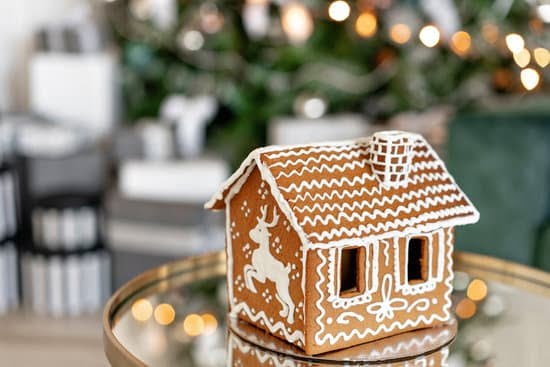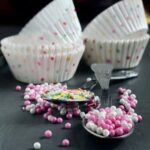Whether you’re a professional baker or just an avid home cook, mastering the art of cake decorating is a valuable skill. And when it comes to creating stunning designs that taste as good as they look, buttercream is the perfect choice. In this article, we will explore the world of buttercream and how it can elevate your cake decorating skills, specifically through the rose swirl technique.
Buttercream not only adds a delicious flavor to cakes but also enhances their aesthetic appeal. It’s smooth, creamy texture allows for easy piping and shaping, making it ideal for creating intricate designs on cakes. The rose swirl technique is one such design that showcases the versatility of buttercream. By piping swirls in a circular motion with varying pressure, you can create a beautiful cascade of roses that instantly elevates the look of any cake.
In this introductory section, we will delve into the basics of buttercream and outline why it is the perfect choice for cake decoration. We’ll also discuss the rose swirl technique and how it can take your cake decorating skills to new heights.
So whether you’re a beginner looking to learn the fundamentals or an experienced decorator seeking inspiration and tips for advanced techniques, this article has got you covered. Get ready to unleash your creativity with buttercream’s rose swirl technique.
The Basics of Buttercream
Ingredients needed for a classic buttercream recipe are:
- 1 cup (226g) unsalted butter, at room temperature.
- 4 cups (480g) powdered sugar.
- 2 teaspoons vanilla extract.
- 2-3 tablespoons milk or heavy cream.
To make buttercream from scratch, follow these detailed instructions:
- In a large bowl, beat the butter with an electric mixer on medium-high speed until creamy and smooth, about 2 minutes.
- Gradually add the powdered sugar, about 1 cup at a time, beating well after each addition.
- Stir in the vanilla extract until well combined.
- Add the milk or heavy cream, starting with 2 tablespoons and adding more as needed, to achieve your desired consistency. Beat on medium speed for about 2 minutes until light and fluffy.
Tips for achieving the perfect consistency for decorating include:
- If your buttercream is too thick, add more milk or heavy cream, one tablespoon at a time, until it reaches the desired consistency.
- If your buttercream is too thin or runny, add more powdered sugar, one tablespoon at a time, until it thickens up.
Ensuring the right consistency is crucial for successful cake decorating with buttercream. It should be firm enough to hold its shape when piped but still smooth and spreadable.
| Ingredient | Quantity |
|---|---|
| Unsalted butter | 1 cup (226g) |
| Powdered sugar | 4 cups (480g) |
| Vanilla extract | 2 teaspoons |
| Milk or heavy cream | 2-3 tablespoons |
Mastering the Rose Swirl Technique
To elevate your cake decorating skills, mastering the rose swirl technique is essential. With its elegant and intricate design, the rose swirl adds a touch of sophistication to any cake. This section will provide you with a step-by-step guide accompanied by visuals to help you master this stunning technique.
Step 1: Prepare your piping bag
Start by fitting a piping bag with a large open star tip, such as a Wilton 1M or 2D. Securely attach the tip by twisting it onto the end of the piping bag.
Step 2: Fill the piping bag with buttercream
Using a spatula or spoon, transfer your prepared buttercream into the piping bag. Fill it about halfway full to ensure you have enough room for an even grip when squeezing.
Step 3: Create a base for your roses
Begin by holding your piping bag directly above the center of your cake. Apply steady pressure as you squeeze out a small amount of buttercream onto the surface of the cake. This will act as a base for your roses.
Step 4: Pipe individual petals
Starting from the outer edge of your base, pipe curved petals around the center point using a spiraling motion. Continue this motion, making each petal slightly larger than the previous one, creating layers of petals that resemble a rose bloom.
Step 5: Build up roses
Continue adding more petals, making sure they overlap slightly and become larger as you work towards the center. Keep in mind that consistency in size and spacing between petals will create uniformity in your swirls.
Step 6: Complete and repeat
Once you reach the desired size for your roses or cover the desired area, release pressure on the piping bag and pull away to create a clean finish. Repeat this process, piping roses side by side until you have achieved your desired design.
Achieving uniformity in your swirls is crucial for a visually pleasing result. Here are some additional tips for perfecting your piping technique:
- Practice consistent pressure: Maintaining even pressure on the piping bag will ensure that each petal is piped with the same thickness and shape.
- Rotate your wrist: As you pipe, try rotating your wrist slightly to create a more natural-looking swirl.
- Piping speed: Experiment with adjusting your piping speed to control the shape and size of your petals. Slower speeds may result in larger and more open roses, while faster speeds can produce tighter and smaller blooms.
Remember, practice makes perfect when it comes to mastering any cake decorating technique. By following these step-by-step instructions and utilizing the accompanying visuals, you will soon be creating stunning rose swirl designs that will impress everyone who lays eyes on your cakes.
Flavor Variations
Buttercream is not only a versatile decorating medium, but it can also be infused with delicious flavors to elevate the taste of your cake. While classic buttercream is sweet and creamy on its own, adding unique flavors can take your cake to the next level. Here are some suggestions for infusing buttercream with delicious tastes:
- Citrus: Add a burst of freshness by incorporating citrus flavors into your buttercream. Some popular options include lemon, lime, orange, or even grapefruit. To achieve this, simply add freshly squeezed juice or zest into your buttercream mixture.
- Chocolate: If you’re a chocolate lover, why not incorporate it into your buttercream? Melted chocolate can be mixed into the butter and sugar mixture to create a rich and decadent flavor profile.
- Fruit: Fresh fruit purees or extracts can add a burst of fruity goodness to your buttercream. Consider using strawberries, raspberries, mangoes, or even bananas for a unique twist. Be sure to adjust the consistency of the buttercream accordingly when adding purees.
- Spices: Warm spices such as cinnamon, nutmeg, or cardamom can add depth and complexity to your buttercream. Simply mix in these spices along with the other ingredients in your recipe for an aromatic and flavorful result.
To complement the rose swirl technique, consider pairing certain flavored buttercreams with specific cake flavors:
- If you’re making a vanilla cake with rose swirls, try infusing the buttercream with a touch of almond extract for a subtle nutty flavor that pairs well with floral notes.
- For a chocolate cake with rose swirls, consider using a chocolate-infused buttercream to enhance the rich cocoa flavor and create a harmonious taste experience.
- If you’re making a lemon cake with rose swirls, add a touch of lemon zest or extract to the buttercream for a refreshing citrus burst that complements the tanginess of the cake.
- For a strawberry or raspberry flavored cake, use a corresponding fruit-infused buttercream to amplify the fruity taste and create a cohesive flavor profile.
By incorporating these flavor variations into your buttercream, you can truly customize your cakes and delight your taste buds. Experiment with different combinations and have fun creating unique flavor experiences with the rose swirl technique.
Troubleshooting Tips
Solutions for Inconsistent Icing Consistency
When it comes to buttercream decorating, achieving the perfect consistency is crucial. The consistency of your buttercream can greatly affect the outcome of your decoration. If your icing is too stiff, it will be difficult to pipe smooth and even swirls. On the other hand, if your icing is too runny, your decorations may not hold their shape.
To address issues with inconsistent icing consistency, there are a few solutions you can try. Firstly, if your buttercream is too stiff, you can add a small amount of liquid such as milk or cream, a teaspoon at a time until it reaches the desired consistency. Make sure to mix well after each addition and test the piping by making small swirls until you achieve the right texture.
Alternatively, if your buttercream is too runny, you can thicken it by adding powdered sugar gradually until it thickens up. It’s important to add the powdered sugar in small increments so that you don’t overdo it and end up with a dry and powdery texture. Again, test the piping consistency regularly to make sure you don’t go from one extreme to another.
Avoiding Air Bubbles or Breaking Piping Bags
Air bubbles and breaking piping bags can be frustrating when it comes to buttercream decorating. These issues can lead to inconsistencies in your decoration and disrupt the smooth flow of creating beautiful rose swirls.
To avoid air bubbles in your buttercream, always make sure to mix it thoroughly before transferring it into a piping bag. Use a spatula or mixer on low speed to gently remove any air pockets that might have formed during mixing or transferring.
As for breaking piping bags, using high-quality piping bags made of durable material is essential. Avoid overfilling them with buttercream as this can put excess pressure on the bag and cause it to break. It’s also a good idea to have extra piping bags on hand in case of emergencies.
Fixing Mistakes and Salvaging a Cake Decoration
We’ve all been there – a slight slip-up or mistake during cake decorating can happen to even the most experienced bakers. The key is not to panic, but rather to act quickly and creatively in order to salvage your cake decoration.
If you make a mistake while piping your rose swirls, such as a lopsided or uneven swirl, don’t worry. You can easily fix it by carefully removing the buttercream with a spatula or palette knife and trying again. Smooth out any areas that need fixing with an offset spatula before attempting another swirl.
If you encounter more serious mistakes like smudging or smearing your buttercream, try using an angled spatula dipped in hot water. Gently smooth over the affected area, blending it with the rest of the decoration. You can also use additional piped decorations or edible flowers to cover up any imperfections.
Remember, practice makes perfect when it comes to buttercream decorating. Don’t be discouraged by mistakes – instead, view them as learning opportunities and chances to improve your skills. With some patience and creativity, you’ll soon be creating stunning rose swirl cakes that are sure to impress.
Decorating Inspiration
The rose swirl technique is not only visually stunning, but it is also incredibly versatile. It can be used to create beautiful cake designs for a wide variety of occasions and styles. Whether you’re decorating a birthday cake, wedding cake, or even just a special dessert for a dinner party, the rose swirl technique can add elegance and charm to any creation.
Cake Designs and Occasions
One of the reasons why the rose swirl technique is so popular is because it can be adapted to suit any theme or occasion. For example, if you’re decorating a birthday cake for a child, you can use vibrant colored buttercream in primary colors to create a playful and fun design. On the other hand, if you’re making a cake for an elegant wedding, you can opt for more delicate pastel colors to achieve a sophisticated look.
Additionally, the rose swirl technique can be used on cakes of various shapes and sizes. It works beautifully on traditional layer cakes as well as on single-tiered cakes or even cupcakes. The versatility of this technique allows you to explore your creativity and adapt it to fit any vision or concept that you have in mind.
Incorporating Other Piping Techniques
While the rose swirl technique alone is gorgeous, you can take your cake decorating skills to the next level by incorporating other piping techniques alongside it. For instance, you could add piped leaves or vines around the roses to create a more natural and garden-inspired look. Alternatively, you could use different piping tips to create additional textures for added dimension.
Furthermore, don’t limit yourself when it comes to decorations that complement the rose swirl design. Edible pearls or sprinkles can be strategically placed between the roses for an extra touch of elegance. Fresh flowers or edible sugar flowers can also be used as accents around the roses to enhance the overall aesthetic of the cake. The possibilities are endless when it comes to creative ways to enhance and personalize your rose swirl creations.
Advanced Techniques
Once you have mastered the basic techniques of creating a rose swirl with buttercream, it’s time to take your skills to the next level. This section will explore some advanced techniques and tips that will help you create even more stunning and intricate designs using the rose swirl technique.
One way to elevate your rose swirl designs is by creating ombré or multi-colored effects. To achieve an ombré effect, start by tinting your buttercream in different shades of the same color. Load a piping bag fitted with a large open star tip with the lightest shade of buttercream at the top and gradually add darker shades as you pipe. As you apply pressure and pipe the roses, the colors will blend together to create a beautiful gradient effect.
In addition to ombré effects, you can also add additional texture or dimension to your rose swirls. One technique is to use a petal tip instead of an open star tip when piping the roses. The petal tip creates petals that are more defined and realistic, adding depth to your design. Another option is to vary the size of your roses by using different sizes of piping tips or applying varying amounts of pressure when piping.
For those looking for even more unique effects, advanced piping tips can be used to create different types of rose swirl designs. For example, a closed star tip will produce roses with tighter ruffles, while a French star tip will create elongated petals that resemble peonies. Experimenting with different tips and techniques will allow you to unleash your creativity and create truly one-of-a-kind cake decorations.
| Technique | Description |
|---|---|
| Ombré Effect | Create a gradient of colors by piping roses with varying shades of buttercream |
| Petal Tip | Use a petal tip instead of an open star tip for more defined and realistic roses |
| Varied Size Roses | Use different sizes of piping tips or apply varying amounts of pressure to create roses of different sizes within the design |
| Advanced Piping Tips | Experiment with closed star tips or French star tips to create unique rose swirl effects |
By incorporating these advanced techniques into your cake decorating repertoire, you can take your rose swirl skills to new heights. Remember to practice and experiment with different designs and ideas, as there are endless possibilities when it comes to creating stunning buttercream decorations. Let your creativity shine and enjoy the process of bringing your cake visions to life.
Conclusion
In conclusion, the rose swirl technique using buttercream is truly a game-changer in cake decorating. Not only does buttercream add flavor to your cakes, but it also provides aesthetic appeal with its smooth and creamy texture. Throughout this article, we have explored the various aspects of creating a beautiful rose swirl and how to master this technique.
By following the step-by-step instructions provided, you can easily achieve a stunning rose swirl on your cakes. The tips for achieving the perfect consistency and piping techniques will ensure that your swirls are uniform and visually appealing. Additionally, the inclusion of visuals and photos throughout the article has served as a helpful guide in understanding the process.
Furthermore, we have discussed how you can take your rose swirl skills to the next level by experimenting with flavor variations and incorporating other piping techniques or decorations alongside the rose swirl. The versatility of this technique is truly remarkable, making it suitable for various cake designs and occasions.
Finally, I encourage you to unleash your creativity and continue practicing with the rose swirl technique. With time and experience, you will become more confident in creating unique and intricate designs on your cakes. Remember that buttercream is a versatile medium that allows you to experiment and explore different flavors, textures, and effects.
Frequently Asked Questions
How to make a rose buttercream swirl?
To make a rose buttercream swirl, start by preparing a batch of buttercream frosting. Transfer the frosting into a piping bag fitted with a large open star tip. Begin piping the swirl by applying pressure to the piping bag while holding it perpendicular to the surface of the cake or cupcake.
Start from the center and pipe in a clockwise direction, gradually increasing pressure as you move outward in a circular motion. As you reach the edge, release pressure and stop piping while giving it a slight flick to create a tapered end. Repeat this process around the center, forming multiple layers until you achieve the desired size and shape of your rose swirl.
What icing tip to use for rose swirl?
The ideal icing tip for creating a rose swirl is an open star tip, most commonly known as the Wilton 1M or 2D tip. This tip has deep ridges that allow the buttercream to form beautiful waves as it is piped out.
The wide opening and sharp points of this tip contribute to achieving the distinctive petal-like effect of a rose when used correctly. You can experiment with other star tips if desired, but generally, open star tips are considered best for creating rose-like designs due to their distinct shape and resulting texture.
How do you decorate a cake with buttercream swirls?
When decorating a cake with buttercream swirls, there are several techniques you can use to achieve an appealing design. Start by crumb-coating your cake with a thin layer of plain buttercream to seal in any loose crumbs. Once your base layer has set, fill a piping bag fitted with your desired tip (e.g., an open star tip) with colored or flavored buttercream frosting. Begin piping large swirls along the bottom edge of your cake, applying even pressure and using consistent circular motions as you work your way up each layer.
For added visual interest, vary the size and position of your swirls for an organic look. Alternatively, you can pipe smaller rosettes all over the cake, spacing them evenly. Feel free to garnish with sprinkles, edible flowers, or other decorations to complement your buttercream swirls. Remember to practice patience and take your time, as neatness and consistency will enhance the overall appearance of your cake.

Welcome to our cake decorating blog! My name is Destiny Flores, and I am the proud owner of a cake decorating business named Cake Karma. Our mission is to provide delicious, beautiful cakes for all occasions. We specialize in creating custom cakes that are tailored specifically to each customer’s individual needs and tastes.





